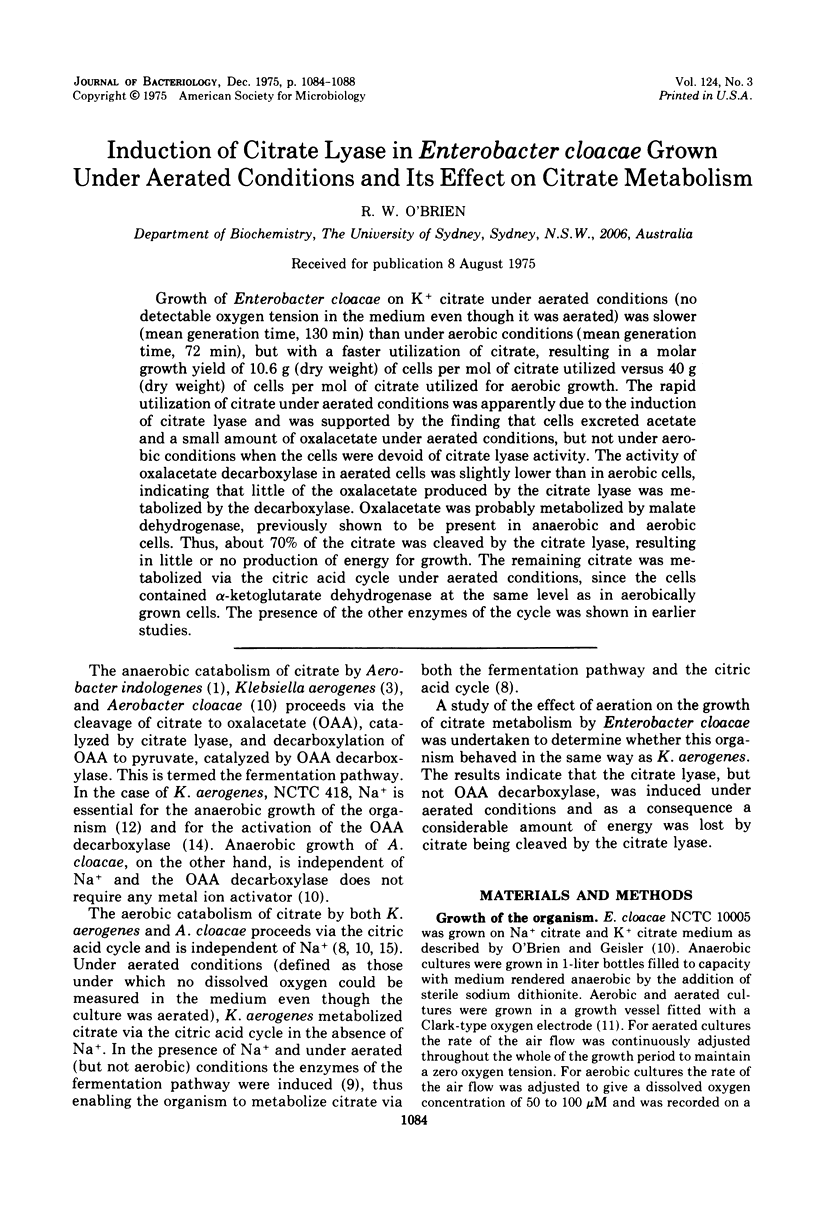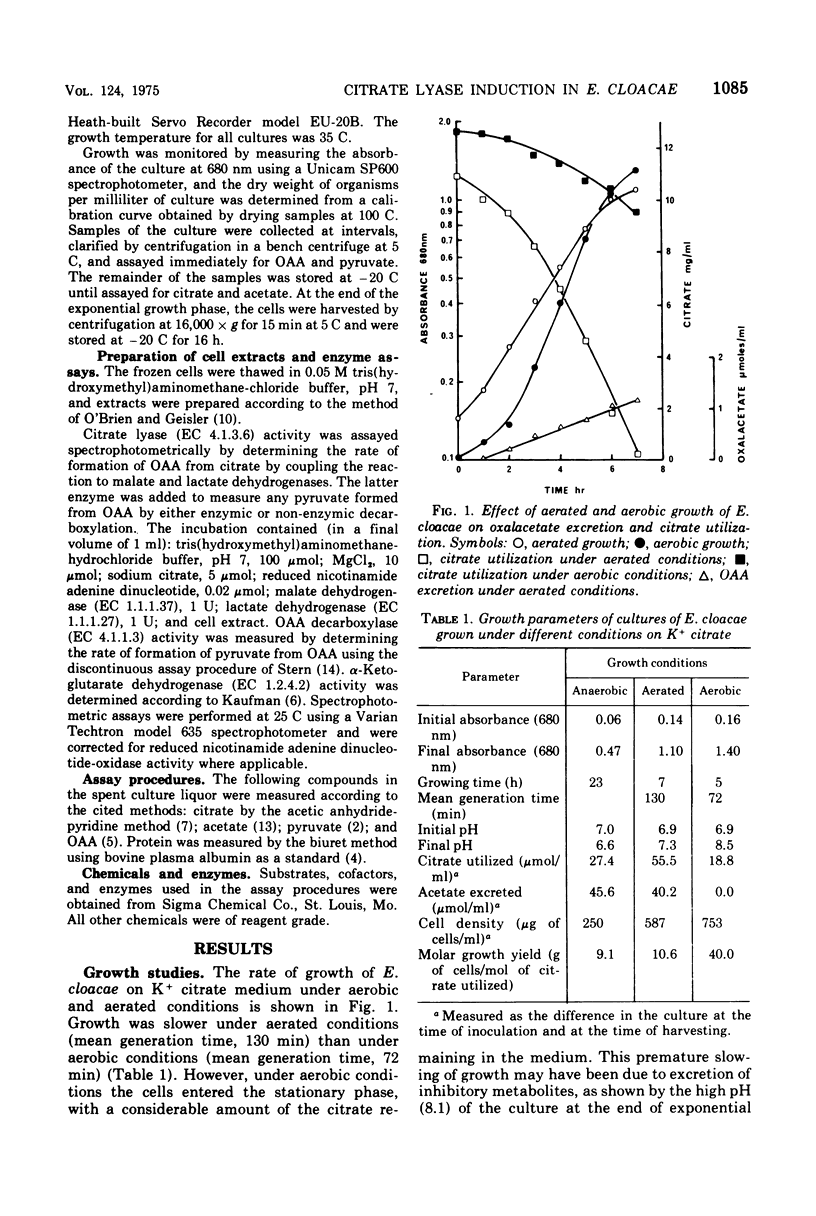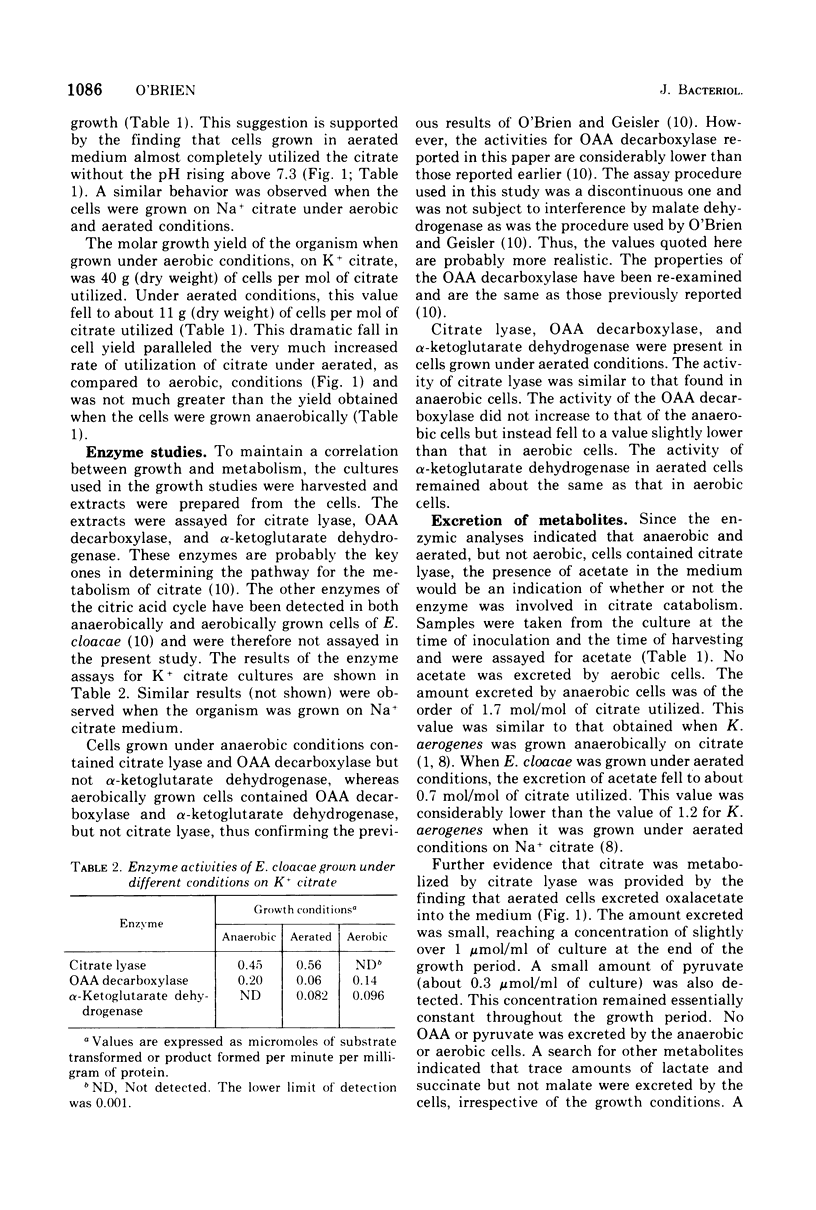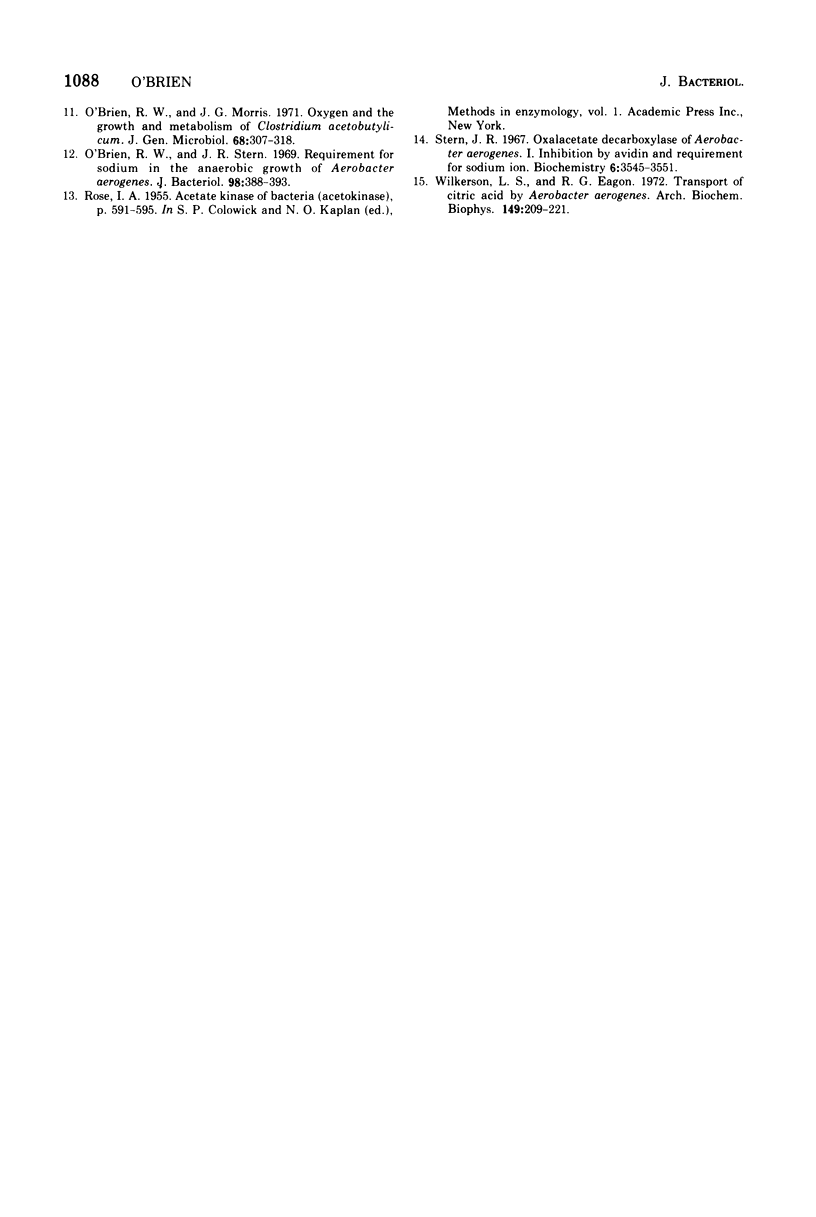Abstract
Growth of Enterobacter cloacae on K+ citrate under aerated conditions (no detectable oxygen tension in the medium even though it was aerated) was slower (mean generation time, 130 min) than under aerobic conditions (mean generation time, 72 min), but with a faster utilization of citrate, resulting in a molar growth yield of 10.6 g (dry weight) of cells per mol of citrate utilized versus 40 g (dry weight) of cells per mol of citrate utilized for aerobic growth. The rapid utilization of citrate under aerated conditions was apparently due to the induction of citrate lyase and was supported by the finding that cells excreted acetate and a small amount of oxalacetate under aerated conditions, but not under aerobic conditions when the cells were devoid of citrate lyase activity. The activity of oxalacetate decarboxylase in aerated cells was slightly lower than in aerobic cells, indicating that little of the oxalacetate produced by the citrate lyase was metabolized by the decarboxylase. Oxalacetate was probably metabolized by malate dehydrogenase, previously shown to be present in anaerobic and aerobic cells. Thus, about 70% of the citrate was cleaved by the citrate lyase, resulting in little or no production of energy for growth. The remaining citrate was metabolized via the citric acid cycle under aerated conditions, since the cells contained alpha-ketoglutarate dehydrogenase at the same level as in aerobically grown cells. The presence of the other enzymes of the cycle was shown in earlier studies.
Full text
PDF




Selected References
These references are in PubMed. This may not be the complete list of references from this article.
- DAGLEY S., DAWES E. A. Dissimilation of citric acid by bacterial extracts. Nature. 1953 Aug 15;172(4372):345–346. doi: 10.1038/172345a0. [DOI] [PubMed] [Google Scholar]
- O'Brien Induction by sodium of the citrate fermentation enzymes in Klebsiella aerogenes. FEBS Lett. 1975 Apr 15;53(1):61–63. doi: 10.1016/0014-5793(75)80682-x. [DOI] [PubMed] [Google Scholar]
- O'Brien R. W. Effect of aeration and sodium on the metabolism of citrate by Klebsiella aerogenes. J Bacteriol. 1975 May;122(2):468–473. doi: 10.1128/jb.122.2.468-473.1975. [DOI] [PMC free article] [PubMed] [Google Scholar]
- O'Brien R. W., Geisler J. Citrate metabolism in Aerobacter cloacae. J Bacteriol. 1974 Sep;119(3):661–665. doi: 10.1128/jb.119.3.661-665.1974. [DOI] [PMC free article] [PubMed] [Google Scholar]
- O'Brien R. W., Morris J. G. Oxygen and the growth and metabolism of Clostridium acetobutylicum. J Gen Microbiol. 1971 Nov;68(3):307–318. doi: 10.1099/00221287-68-3-307. [DOI] [PubMed] [Google Scholar]
- O'Brien R. W., Stern J. R. Requirement for sodium in the anaerobic growth of Aerobacter aerogenes on citrate. J Bacteriol. 1969 May;98(2):388–393. doi: 10.1128/jb.98.2.388-393.1969. [DOI] [PMC free article] [PubMed] [Google Scholar]
- Stern J. R. Oxalacetate decarboxylase of Aerobacter aerogenes. I. Inhibition by avidin and requirement for sodium ion. Biochemistry. 1967 Nov;6(11):3545–3551. doi: 10.1021/bi00863a028. [DOI] [PubMed] [Google Scholar]
- Wilkerson L. S., Eagon R. G. Transport of citric acid by Aerobacter aerogenes. Arch Biochem Biophys. 1972 Mar;149(1):209–221. doi: 10.1016/0003-9861(72)90316-5. [DOI] [PubMed] [Google Scholar]


